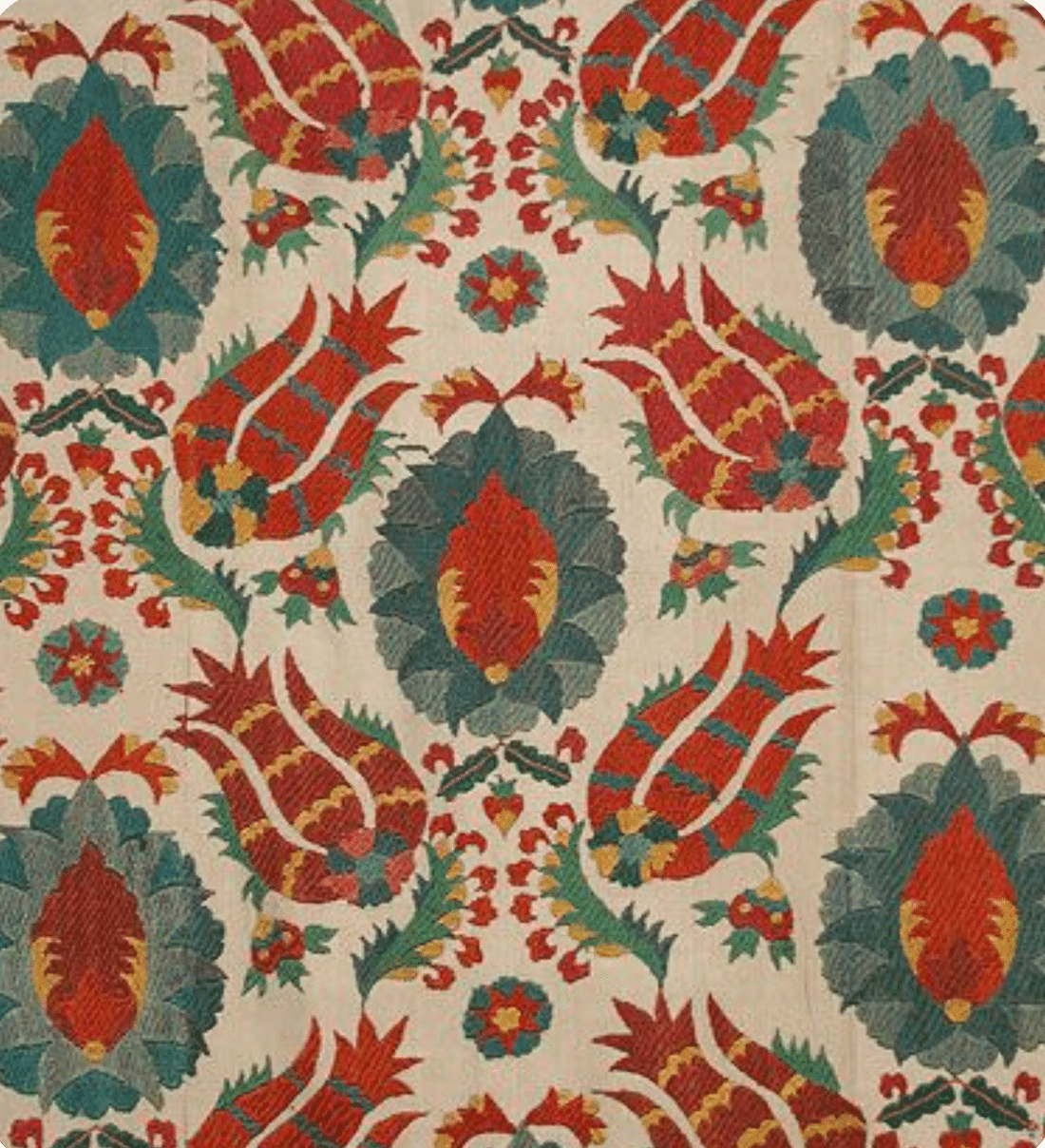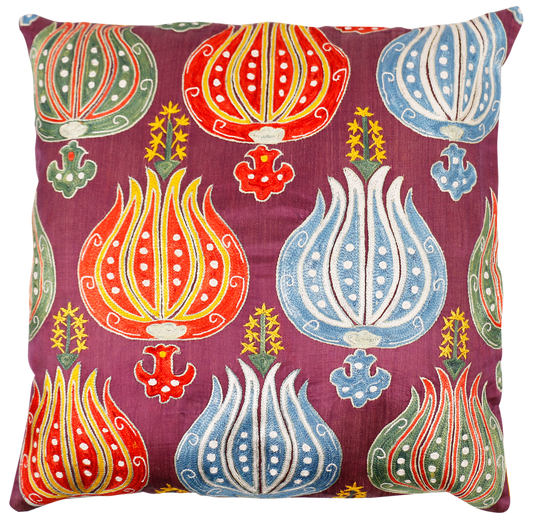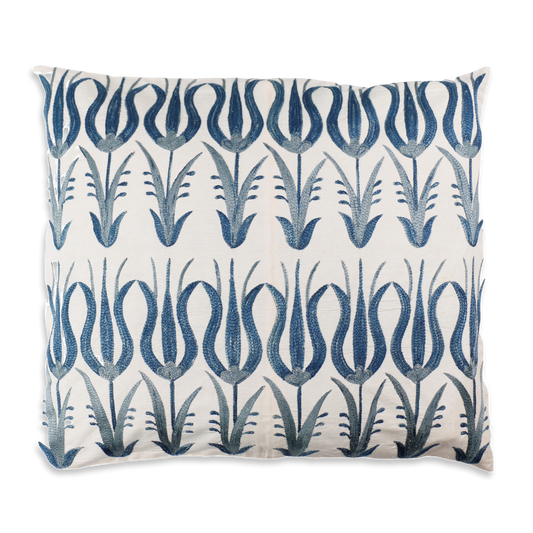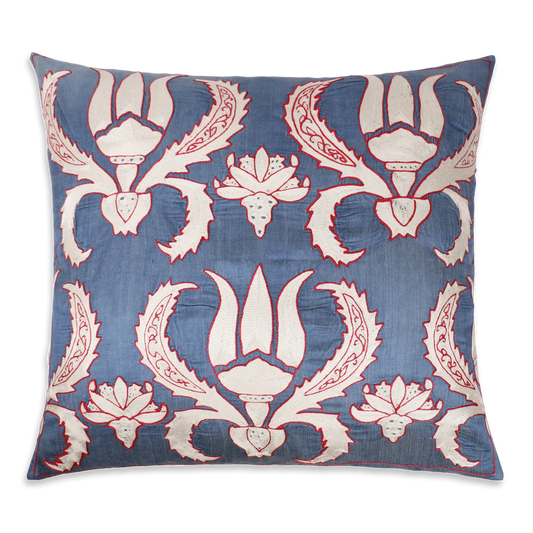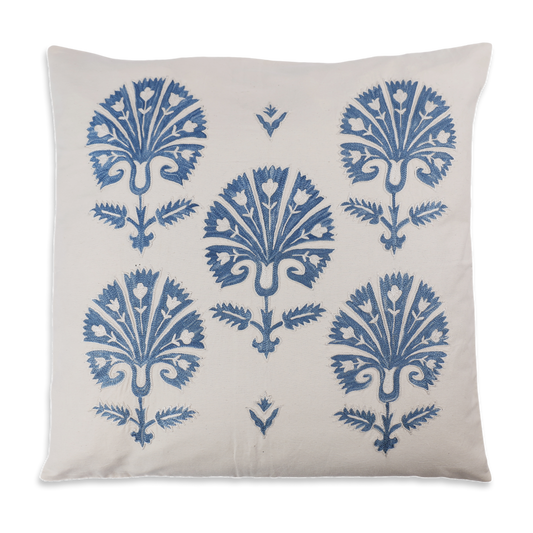A suzani is a large, hand-embroidered textile panel; the word comes from the Persian word Suzan, which means needle. Originating from nomadic tribes in Tajikistan, Uzbekistan, Kazakhstan and other Central Asian countries, suzanis have become highly collectable and valued for their beautiful decoration and fine craftsmanship. It is difficult to determine the geographical origins of particular suzanis, precisely because the cultures in which they were produced were nomadic. Uzbekistan, however, is considered a relatively certain centre of suzani production, and some motifs seem to be attached to certain regions in Central Asia. Suzanis are made from cotton, sometimes silk. The pattern is first drawn onto the cotton, before being embroidered on narrow portable looms. They are usually produced in two or more pieces, meaning that they can be worked on by more than one person, before being stitched together.
Suzanis were traditionally made by brides and their mothers as part of a dowry, and presented to the groom on his wedding day. They represented the binding together of two families and were adorned with symbols of luck, health, long life and fertility. Other the primary use of a suzani was within the yurt (a Central Asian nomadic tent), as a protective wrapping panel for textiles and belongings. A 17th-century Turkish tent currently on display at the Wawel Royal Castle, Cracow is one of the unique examples of them. It is a large and powerful reminder of the historic threat to Europe posed by the Turks and the decisive battle at Vienna with the invading Ottoman armies. The roof and walls are decorated with suzani arcades within which are medallions filled with intertwining floral patterns and flowers, including stylised carnations and tulips – the Ottomans’ favourite flower. They were also used as prayer mats, as bedsheets and for seating — pieces of furniture are seldom found in yurts because they are cumbersome to move.

